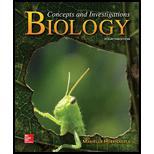
Concept explainers
Introduction:
The lymph capillaries are present in the lymphatic system. It is a colorless fluid. It contains nutrients and ions absorbed and assimilated from the interstitial fluid. This fluid flows through the capillaries and enters the blood circulation again. It contains the white blood cells, bacteria, pathogens and cancerous cells which enter from the blood.
Answer to Problem 1MCQ
Correct answer:
Lymph capillary contains fluids with various blood cells, bacteria, pathogens and cancerous cells. Therefore, option d. is correct.
Explanation of Solution
Reason for the correct statement:
The lymph capillaries contain colorless fluids which are rich in nutrients which enter these capillaries from the blood stream. The constituents include blood cells, bacteria, and cancerous cells.
Option d. is given as “All of the above are correct”.
As, “the lymph capillaries contain blood cells, bacteria and cancerous cells which are absorbed from the interstitial fluid”, is the right answer.
Hence, option d. is correct.
Reasons for the incorrect statements:
Option a. is given as “Bacteria”.
Bacterial cells enter the lymph but there are other cells like cancer cells and blood cells also. So, it is a wrong answer.
Option b. is given as “Interstitial fluid”.
Lymph capillaries contain cancer cells and bacteria absorbed from the blood stream. So, it is a wrong answer.
Option c. is given as “Cancer cells”.
Cancer cells are present in the lymph capillaries but other cells like pathogens and white blood cells are also present. So, it is a wrong answer.
Hence, options a., b., and c. are incorrect.
The lymph capillary contains blood, bacteria, interstitial fluid and cancer cells. These cells are absorbed from the interstitial fluid.
Want to see more full solutions like this?
Chapter 34 Solutions
Biology: Concepts and Investigations
- When beta-lactamase was isolated from Staphylcoccus aureus and treated with a phosphorylating agent, only the active site, serine was phosphorylated. Additionally, the serine was found to constitute 0.35% (by weight) of this beta-lactamase enzyme. Using this, calculate the molecular weight of this enzyme and estimate the number of amino acids present in the polypeptide.arrow_forwardBased on your results from the Mannitol Salt Agar (MSA) media, which of your bacteria were mannitol fermenters and which were not mannitol fermenters?arrow_forwardhelp tutor pleasearrow_forward
- Q8. A researcher wants to study the effectiveness of a pill intended to reduce stomach heartburn in pregnant women. The researcher chooses randomly 400 women to participate in this experiment for 9 months of their pregnancy period. They all need to have the same diet. The researcher designs two groups of 200 participants: One group take the real medication intended to reduce heartburn, while the other group take placebo medication. In this study what are: Independent variable: Dependent variable: Control variable: Experimental group: " Control group: If the participants do not know who is consuming the real pills and who is consuming the sugar pills. This study is It happens that 40% of the participants do not find the treatment helpful and drop out after 6 months. The researcher throws out the data from subjects that drop out. What type of bias is there in this study? If the company who makes the medication funds this research, what type of bias might exist in this research work?arrow_forwardHow do I determine the inhertiance pattern from the pedigree diagram?arrow_forwardits an open book assignemntarrow_forward
- Describe two different gene regulation mechanisms involving methylationarrow_forwardWhat is behavioral adaptarrow_forward22. Which of the following mutant proteins is expected to have a dominant negative effect when over- expressed in normal cells? a. mutant PI3-kinase that lacks the SH2 domain but retains the kinase function b. mutant Grb2 protein that cannot bind to RTK c. mutant RTK that lacks the extracellular domain d. mutant PDK that has the PH domain but lost the kinase function e. all of the abovearrow_forward
 Medical Terminology for Health Professions, Spira...Health & NutritionISBN:9781305634350Author:Ann Ehrlich, Carol L. Schroeder, Laura Ehrlich, Katrina A. SchroederPublisher:Cengage Learning
Medical Terminology for Health Professions, Spira...Health & NutritionISBN:9781305634350Author:Ann Ehrlich, Carol L. Schroeder, Laura Ehrlich, Katrina A. SchroederPublisher:Cengage Learning Biology (MindTap Course List)BiologyISBN:9781337392938Author:Eldra Solomon, Charles Martin, Diana W. Martin, Linda R. BergPublisher:Cengage Learning
Biology (MindTap Course List)BiologyISBN:9781337392938Author:Eldra Solomon, Charles Martin, Diana W. Martin, Linda R. BergPublisher:Cengage Learning Concepts of BiologyBiologyISBN:9781938168116Author:Samantha Fowler, Rebecca Roush, James WisePublisher:OpenStax College
Concepts of BiologyBiologyISBN:9781938168116Author:Samantha Fowler, Rebecca Roush, James WisePublisher:OpenStax College





